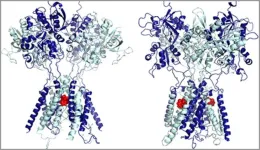(Press-News.org) Transparency and effective communication are critical for brands to gain and keep consumer trust according to new research.
The University of Adelaide’s Dr Kate Sansome, from the Adelaide Business School has led a study which suggests that consumers want brands to be transparent about topics that impact them.
“As sociopolitical issues become topical in the news and social media, brands are expected to be transparent about them; for example, as consumers face cost-of-living pressures, they will expect brands to be transparent about this issue,” says Dr Sansome, who conducted the study with the Professor Jodie Conduit and Dr Dean Wilkie from the Adelaide Business School.
“Our research shows that it’s not just about brands sharing extensive information, but about being open, clear, timely, and providing well-explained, evidence-based information. Open dialogue and answering consumers’ questions are important for transparency, even on sensitive or negative issues, particularly for brands in industries with a negative reputation.”
Dr Sansome says that being transparent means communicating in a simple and easy-to-understand manner, being upfront before external pressure, and backing up claims with statistics, facts, and visual evidence. The study suggests that brands that use tools like infographics or storytelling to explain their decisions give consumers a better understanding of their intentions and reasons behind their actions.
“Consumers are becoming more uncertain of brand communication due to misinformation, deep fakes, misleading claims, and perceived hypocrisy,” Dr Sansome says.
“Scepticism is growing, where a majority of young people believe a brand is hiding something if it avoids certain topics.
“Consumers’ perceptions of certain brands or product categories can influence how they interpret brand transparency. Our research shows that in stigmatised industries like mining or fast fashion, consumer scepticism can make it difficult for people to recognise a brand's efforts to be transparent, regardless of its intentions.”
Dr Sansome says her study highlights a need for brands to improve how they communicate transparency to consumers in order for them to make informed decisions.
The study provides a deeper insight than traditional research, which mainly views transparency through a managerial or governance lens and focuses on information to meet regulatory requirements or supply chain or pricing information. Unlike these approaches, Dr Sansome’s research accounts for the subjectivity in how consumers evaluate brand communication and the topics of relevance to consumers.
“For brands and businesses, these findings provide insight into consumers' need for brands to be transparent on topics beyond pricing and supply chain information and presented in a way that meets their expectations,” Dr Sansome explains.
“Providing exhaustive information in PDF form on a website is insufficient. Transparency is a continuous, evolving dialogue with consumers, with clear, timely, evidence-based and explanatory communication.”
Dr Sansome says further research is needed to explore strategies enabling brands to share their sustainability progress transparently without compromising brand equity or facing significant reputational risks.
“With the rise of regulations targeting ‘greenwashing,’ brands increasingly practise ‘greenhushing,’ opting for silence rather than risking scrutiny or backlash,” Dr Sansome says. “As consumers become more discerning, brands must prepare for scrutiny and scepticism and challenges particularly for brands in stigmatised industries in communicating progress towards sustainability.”
The study was published in European Journal of Marketing and was conducted through qualitative interviews with experts, such as brand managers, government officials, third-party accreditors, and in-depth consumer interviews.
END
How can brands address growing consumer scepticism?
Transparency and effective communication are critical for brands to gain and keep consumer trust according to new research.
2024-11-19
ELSE PRESS RELEASES FROM THIS DATE:
New paradigm of quantum information technology revealed through light-matter interaction!
2024-11-19
□ A research team led by Professor Jaedong Lee from the Department of Chemical Physics of DGIST (President Kunwoo Lee) has introduced a novel quantum state and a pioneering mechanism for extracting and controlling quantum information using exciton and Floquet states.
□ Collaborating with Professor Noejung Park from UNIST’s Department of Physics (President Chongrae Park), the team has, for the first time, demonstrated the formation and synthesis process of exciton and Floquet states, which arise from light-matter interactions in two-dimensional semiconductors. This study captures quantum information in real-time as it unfolds through entanglement, offering ...
MSU researchers find trees acclimate to changing temperatures
2024-11-19
Images
Climate change is a persistent and growing challenge to plant life on our planet. Changes to the environment that plants are unaccustomed to affect how they grow, putting much at risk. Increasingly, plant scientists are trying to determine how these environmental changes will impact plant life and whether plants will be able to acclimate to a new status quo.
Researchers from the Walker lab at the Michigan State University-U.S. Department of Energy Plant Research Laboratory, or PRL, are looking at how paper birch trees adapt to changing environments based on how they manage a vital plant process called photorespiration.
“If ...
World's first visual grading system developed to combat microplastic fashion pollution
2024-11-19
Over 14 million tonnes of microplastics are estimated to be lying on the ocean floor with the fashion industry among the worst pollutants.
But a new project led by textile experts at Heriot-Watt University in the Scottish Borders, is aiming to make fashion labels and consumers alike, more environmentally aware when manufacturing and buying new clothes.
For four years, a small team headed by Dr Lisa Macintyre, associate professor of textiles at the University’s School of Textiles and Design in the Galashiels campus, has overseen painstaking ...
Teenage truancy rates rise in English-speaking countries
2024-11-19
Working paper | Quantitative data analysis | People
Truancy rates have risen faster in developed English-speaking countries since the Covid-19 pandemic than in non-English-speaking countries, according to a new working paper by UCL researchers.
Teenage girls are also increasingly more likely to skip school than boys across Anglophone countries.
In 2022, 26% of all Year 11 pupils in England reported playing truant at least once in the last fortnight. This represented an increase from 2012 and 2018, the previous data capture points, when the figure was at 18% each time.
In the same year (2022), 29% of Year 11 girls in England reported skipping school in the past ...
Cholesterol is not the only lipid involved in trans fat-driven cardiovascular disease
2024-11-18
LA JOLLA (November 14, 2024)—Excess cholesterol is known to form artery-clogging plaques that can lead to stroke, arterial disease, heart attack, and more, making it the focus of many heart health campaigns. Fortunately, this attention to cholesterol has prompted the development of cholesterol-lowering drugs called statins and lifestyle interventions like dietary and exercise regimens. But what if there’s more to the picture than just cholesterol?
New research from Salk Institute scientists describes how another class of lipids, called sphingolipids, contributes to arterial plaques and atherosclerotic cardiovascular disease ...
Study: How can low-dose ketamine, a ‘lifesaving’ drug for major depression, alleviate symptoms within hours? UB research reveals how
2024-11-18
BUFFALO, N.Y. — University at Buffalo neuroscientists have identified the binding site of low-dose ketamine, providing critical insight into how the medication, often described as a wonder drug, alleviates symptoms of major depression in as little as a few hours with effects lasting for several days.
Published in September in Molecular Psychiatry, the UB discovery will also help scientists identify how depression originates in the brain, and will stimulate research into using ketamine and ketamine-like drugs for other ...
New nasal vaccine shows promise in curbing whooping cough spread
2024-11-18
As whooping cough cases rise in the U.S., a new nasal vaccine developed by Tulane University may hold the key to reducing the spread of the highly contagious respiratory disease.
Current pertussis vaccines are widely used and effective at preventing whooping cough, caused by the Bordetella pertussis bacteria. However, the vaccines fail to clear bacteria from the upper respiratory tract, allowing even vaccinated individuals to spread the disease.
The new vaccine combines the traditional pertussis antigens with an innovative ...
Smarter blood tests from MSU researchers deliver faster diagnoses, improved outcomes
2024-11-18
Image
Highlights:
MSU researchers now can identify more proteins, or biomarkers, in blood plasma, including those linked to specific diseases like cancer.
By identifying these biomarkers earlier, medical researchers can create better diagnostic tests and drugs that target diseases sooner, improving patient outcomes.
EAST LANSING, Mich. – Medical professionals have long known that the earlier a disease is detected, the higher the chance for a better patient outcome. Now, a multidisciplinary team of Michigan State University researchers, in ...
Q&A: A new medical AI model can help spot systemic disease by looking at a range of image types
2024-11-18
Artificial intelligence is making impressive strides in its ability to read medical images. In a recent test in Britain's National Health Service, an AI tool looked at the mammograms of over 10,000 women and correctly identified which patients were found to have cancer. The AI also caught 11 cases doctors had missed. But systemic diseases, such as lupus and diabetes, present a greater challenge for these systems, since diagnosis often involves many kinds of medical images, from MRIs to CT scans.
Sheng Wang, a University ...
For low-risk pregnancies, planned home births just as safe as birth center births, study shows
2024-11-18
CORVALLIS, Ore. – In low-risk pregnancies, mothers and children are just as safe with a planned home birth as they are with a planned birth center birth, a national study led by Oregon State University researchers has shown.
The findings, published in Medical Care, contradict doctors’ long-held concerns about home birth, including a recent opinion by the American College of Gynecologists and Obstetricians that describes hospitals and accredited birth centers as the safest places to have a baby. A birth center is a health care facility designed to provide a more natural and home-like environment than a hospital.
OSU ...
LAST 30 PRESS RELEASES:
Norbert Holtkamp appointed director of Fermi National Accelerator Laboratory
New agentic AI platform accelerates advanced optics design
Biologists discover neurons use physical signals — not electricity — to stabilize communication
Researchers discover that a hormone can access the brain by hitchhiking
University of Oklahoma researcher awarded funding to pursue AI-powered material design
Exploring how the visual system recovers following injury
Support for parents with infants at pediatric check-ups leads to better reading and math skills in elementary school
Kids’ behavioral health is a growing share of family health costs
Day & night: Cancer disrupts the brain’s natural rhythm
COVID-19 vaccination significantly reduces risk to pregnant women and baby
The role of vaccination in maternal and perinatal outcomes associated with COVID-19 in pregnancy
Mayo Clinic smartwatch system helps parents shorten and defuse children's severe tantrums early
Behavioral health spending spikes to 40% of all children’s health expenditures, nearly doubling in a decade
Digital cognitive behavioral treatment for generalized anxiety disorder
Expenditures for pediatric behavioral health care over time and estimated family financial burden
Air conditioning in nursing homes and mortality during extreme heat
The Alps to lose a record number of glaciers in the next decade
What makes a good proton conductor?
New science reporting guide published for journalists in Bulgaria
New international study reveals major survival gaps among children with cancer
New science reporting guide published for journalists in Turkey
Scientists develop a smarter mRNA therapy that knows which cells to target
Neuroanatomy-informed brain–machine hybrid intelligence for robust acoustic target detection
Eight SwRI hydrogen projects funded by ENERGYWERX
The Lundquist Institute and its start-up company Vitalex Biosciences Announces Strategic Advancement of Second-Generation fungal Vaccine VXV-01 through Phase 1 Trials under $40 Million Competitive Con
Fine particles in pollution are associated with early signs of autoimmune disease
Review article | Towards a Global Ground-Based Earth Observatory (GGBEO): Leveraging existing systems and networks
Penn and UMich create world’s smallest programmable, autonomous robots
Cleveland researchers launch first major study to address ‘hidden performance killer’ in athletes
To connect across politics, try saying what you oppose
[Press-News.org] How can brands address growing consumer scepticism?Transparency and effective communication are critical for brands to gain and keep consumer trust according to new research.



